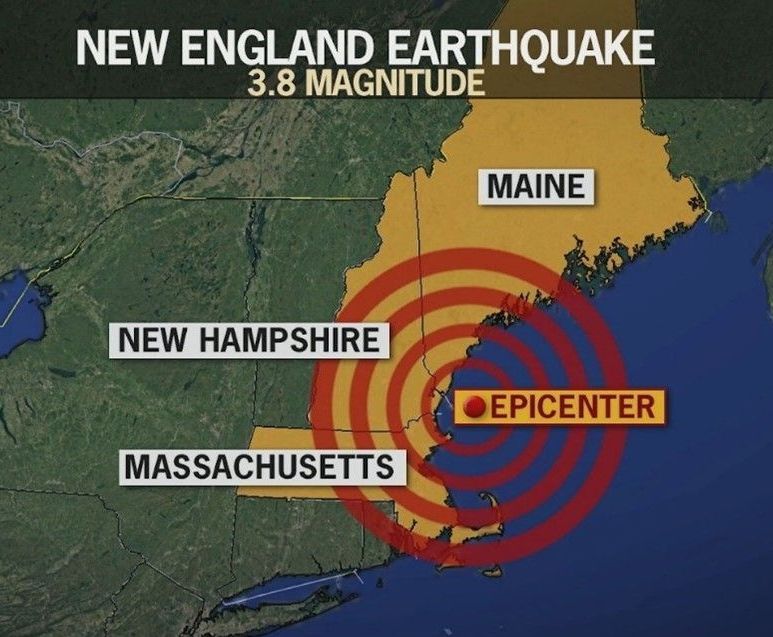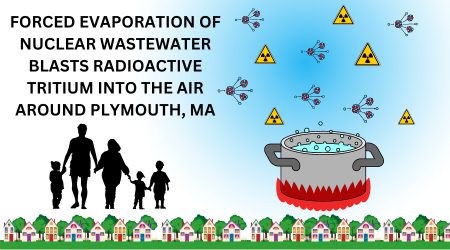Monitoring Cancer with a Stethoscope?
- By Natalie Hildt Treat
- •
- 28 Aug, 2019
C-10's Concrete Expert Says Seabrook's Engineers Lack Expertise and Rely on Simplistic Techniques for a Complex Problem

The moment we’ve been preparing for over the last two and a half years is almost here: the federal hearing on how our nuclear neighbor Seabrook Station is monitoring and managing the problem of concrete suffering from so-called "concrete cancer."
On Friday August 23, ahead of the late September hearing before the Atomic Safety & Licensing Board (ASLB), a body of the U.S. Nuclear Regulatory Commission (NRC), C-10 filed final documents in the case relative to the handling of alkali-silica reaction (ASR) an irreversible type of concrete degradation impacting all key safety structures at the nuclear plant.
“The Summary of Rebuttal Testimony of Victor E. Saouma, Ph.D Regarding Scientific Evaluation of NextEra’s Aging Management Program for Alkali-Silica Reaction at the Seabrook Nuclear Plant,” is available here.
Key Points:
Dr. Saouma, C-10's witness and a world-leading expert in ASR, testified that scientific and engineering principles were not well applied in NextEra’s handling of ASR, noting that he has concerns about the lack of expertise of NextEra’s and the NRC’s staff witnesses in this proceeding.
Dr. Saouma drew an analogy between Seabrook’s core reactor containment enclosure building and a patient suffering from cancer. While modern cancer treatment includes specialists, advanced testing and monitoring, Dr. Saouma likened NextEra’s approach to general practitioners (engineers) using a stethoscope for simplistic observation.
“Despite their expertise to deal with common nuclear plant maladies, they lack the specialized expertise to make a sophisticated diagnosis or prognosis, to create an adequately informed treatment plan for monitoring the complex problem of ASR, or to analyze and respond appropriately to the monitoring approach,” Saouma wrote (p. 3 of summary).
“NextEra effectively put on blinders to a wide range of available techniques and sources of outside expertise, choosing instead to take a code-based engineering approach that could only scratch at the problem. As a result, the basic safety of the population living within 10 miles of Seabrook cannot be reasonably assured,” Saouma wrote (p. 8 of summary).
Our team has worked incredibly hard, and spent countless hours to make our case on behalf of the health and safety of Seabrook’s neighbors. We hope that interested members of the public, like YOU, will come out to witness the proceeding, and make your voice heard at a public comment session on September 23.
What’s Next:
Formal hearing, opportunity for public to observe -The Atomic Safety and Licensing Board is holding a hearing relative to concerns on Seabrook’s concrete beginning at 9:30 am on Tuesday, September 24 at Newburyport City Hall, 60 Pleasant Street, Newburyport, Mass. The Board anticipates that all day Tuesday will be open to the public, and that the morning of Wednesday, September 25 they will begin closed session to take up matters considered sensitive and proprietary. The hearing could last until Friday of that week.
Public Comment Session - On Monday, September 23 from 6-8 pm, there will be an opportunity for public comment, also at Newburyport City Hall. Members of the public are encouraged to sign up ahead of time (by Sept. 13) to speak, although they will also be able to sign up on site. Comments should be limited to five minutes. Full details on the hearing events and how to sign up to speak are on the Notice of Hearing, posted here.
Final ruling expected first quarter of 2020 - The process will culminate in a final ruling by the ASLB on C-10’s contention (described below). If, after the hearing, the Board determines that the license amendment should not have been granted, the amendment can be revoked or conditioned.
Background Information
In October 2017, the U.S. Nuclear Regulatory Commission’s Atomic Safety and Licensing Board admitted five of C-10’s contentions in a proceeding on NextEra’s License Amendment Request relative to the plant’s concrete troubles, a condition known as alkali-silica reaction (ASR). The Board admitted C-10 as a formal, legal intervenor in the case and reformulated five accepted contentions into a single contention:
The large-scale test program, undertaken for NextEra at the FSEL (a lab in Texas), has yielded data that are not “representative” of the progression of ASR at Seabrook. As a result, the proposed monitoring, acceptance criteria, and inspection intervals are not adequate.
C-10’s Expert and Counsel
Victor Saouma, Professor of civil and structural engineering at the University of Colorado, Boulder, is serving as C-10's expert witness in the case regarding Seabrook's concrete. Saouma's work centers on what he sees as flawed test results that affected the safety analysis underpinning NextEra Energy Seabrook's concrete aging management plans. One of the world’s leading experts on alkali-silica reaction (ASR), Saouma has studied its effects on nuclear reactors—in particular, how the containment structures could be weakened should an anticipated earthquake occur. Saouma has worked for decades on concrete structure and material properties, and has many peer-reviewed technical articles on topics regarding concrete degradation. Saouma has researched ASR at nuclear power plants under contract with the U.S Nuclear Regulatory Commission. C-10 is being represented by Diane Curran, the nationally-known environmental and nuclear safety attorney. She has called C-10’s case “very strong.”
Watch highlights of a talk by Saouma and Curran, here. Get more background on the case here.
Follow us



